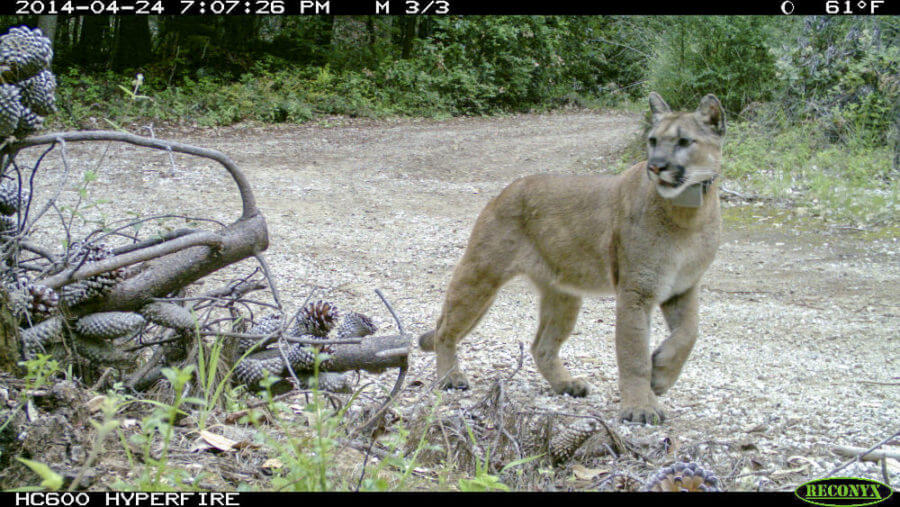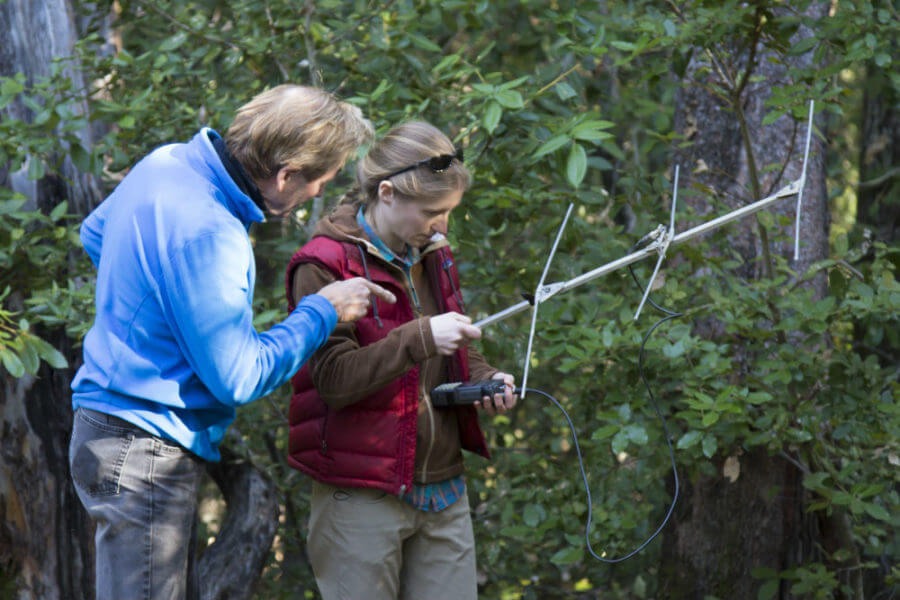Redwoods, Pumas, and People
Finding the balance between wildlife and recreation

“Pumas tend to be fearful of humans, so most of the time they just avoid us,” says Veronica Yovovich, a postdoctoral researcher with UC Berkeley’s Macaulay Lab. “Some people can live in the Santa Cruz mountains their whole lives and never see one. They’re called ghost cats.” Veronica spoke to us when she was an Environmental Studies graduate student at UC Santa Cruz and a researcher with the Santa Cruz Puma Project, a partnership between UCSC and the California Department of Fish and Wildlife.
It was a warm winter day in early February on our 8,852-acre San Vicente Redwoods property. We joined her out on the land to facilitate a television production about “living with lions” for NBC Bay Area’s OpenRoad with Doug McConnell.
“Beep, beep, beep.”

Veronica explained that pumas are important as apex predators (those at the top of the food chain) in helping maintain a healthy ecosystem. Ninety-five percent of the puma diet is deer (a prey species). This naturally regulates the deer population, which in turn regulates the numbers and types of plants that deer feed on. Losing the pumas will throw the balance out of whack.
There are estimated to be 40 pumas in the Santa Cruz mountains, and puma 38F is one of four pumas known to regularly visit San Vicente as part of its territory. But San Vicente isn’t 38F’s home, That terminology is problematic, as female pumas have a home range of 40-80 square miles and males range 100-150 square miles. Note that males fight to defend their territories and have only small overlaps with other males, while females can overlap with other males and females.
The extensive ranges pumas need for territory, hunting and breeding is one reason why it’s so important to have large intact habitats with connected wildlife corridors. Roads and new development that fragment habitat are the biggest threats to pumas. Fortunately, San Vicente Redwoods is adjacent to more than 10,000 acres of protected lands including Swanton Ranch and Coast Dairies, making it a rich contiguous wildlife habitat--an important component of our vision for flourishing redwoods forests in the Santa Cruz mountains.
Puma Project research on San Vicente Redwoods helps identify where pumas are most active–their main through-routes, their denning sites, and communication hubs (yes, they do “talk” to each other via scrapes, scent and caterwauling)–and this data is informing the location of public access trails planned for the property.
Public access to San Vicente Redwoods is likely to be available in 2022, but once more people are on the property Puma Project researchers will monitor the impact on the puma population. Birds, bats, and fish will also continue to be monitored by other researchers. Any significant impacts will inform changes to the adaptive management plan, helping to ensure ecosystem health over time. We didn’t see any “ghost cats” that day but it is heartening to think that these magnificent creatures are on the land and have a chance to thrive alongside human populations, thanks to the support of people like you.
Science on the Spot: Chasing Pumas
Join a research team from University of California, Santa Cruz as they track, tranquilize and collar a wild puma. The special GPS collars collect data on the puma’s location and behavior, and they reveal how the big cats survive in their shrinking habitat in the Bay Area:
Staying Safe in Mountain Lion Country
Information and tips from the California Department of Fish and Wildlife
Mountain lions are quiet, solitary and elusive, and typically avoid people. Mountain lion attacks on humans are extremely rare. However, conflicts are increasing as California’s human population expands into mountain lion habitat.
- Do not hike, bike, or jog alone.
- Avoid hiking or jogging when mountain lions are most active – dawn, dusk, and at night.
- Keep a close watch on small children.
- Do not approach a mountain lion.
- If you encounter a mountain lion, do not run; instead, face the animal, make noise and try to look bigger by waving your arms; throw rocks or other objects. Pick up small children.
- If attacked, fight back.
- If a mountain lion attacks a person, immediately call 911.
Mountain lion? Or bobcat?

Source: California Department of Fish and Wildlife
The Santa Cruz Mountains are a rich, biodiverse habitat home to many species of animals. Two of the largest carnivores in the region, mountain lions and bobcats, are often confused for one another. Here’s how to tell them apart:
The mountain lion (Puma concolor) is known by over 40 different common names including puma, cougar, panther, red tiger, catamount, and screamer. Adults are a solid buff to grey color with a long, curling tail, and can weigh up to 150 lbs. Bobcats (Lynx rufus) are smaller, generally between 12-25 lbs, with distinct black spots and bars on light brown or grey fur and a short bobbed tail. Bobcats are about two to three times the size of a domestic house cat.

